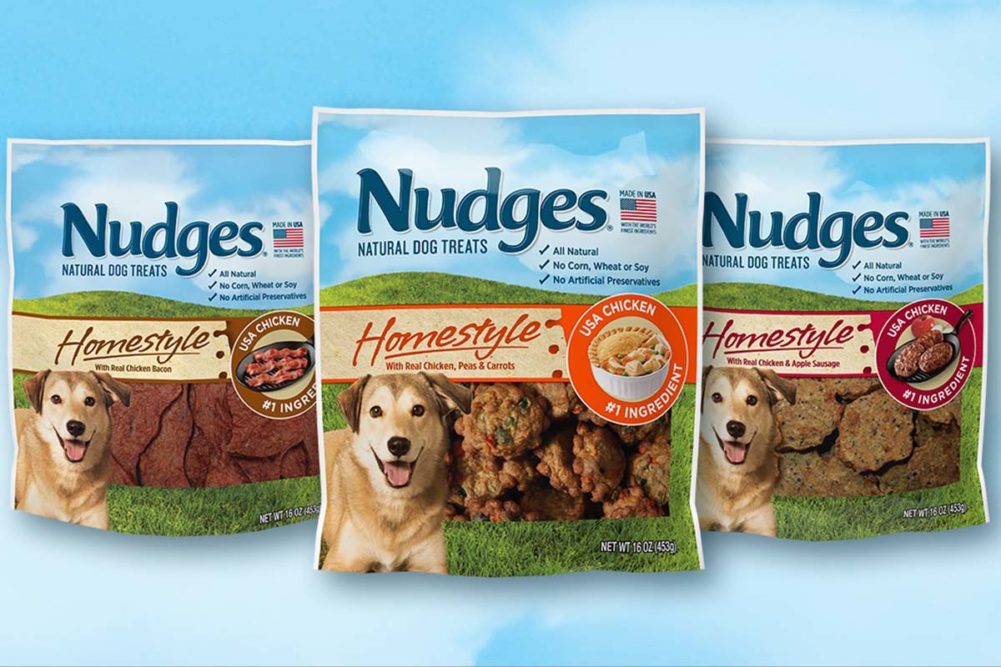MINNEAPOLIS — Like many other companies operating in today’s dynamic environment, General Mills sustained supply chain pressures throughout the second quarter. This, however, did not stop the company from reporting strong growth for its pet segment.
Continued humanization and premiumization of pets is expected to “create tailwinds for the pet food category,” General Mills stated, and the company plans to capitalize with innovations from Blue Buffalo. The company’s acquisition of Tyson Foods’ pet treat business in July, which added Nudges, True Chews and Top Chews brands to General Mills’ pet portfolio, is expected to accelerate growth for this segment.
“Dog treats is the second-largest segment in pet food at an estimated $7 billion in retail sales and growing at a high single-digit rate,” said Jeff Harmening, chairman and chief executive officer of General Mills. “Combining our newly acquired brands with our Blue Buffalo treats business gives us a powerful treats portfolio that is primed to deliver on pet parents' increasing interest in wholesome, natural treating.
“As we continue to integrate these brands into our pet segment, we are confident in the growth and the value creation opportunities ahead,” he added. “In fact, retail sales for Nudges, True Chews and Top Chews were up 22% in measured channels in the first half of the year, adding to the 16% growth for our legacy Blue Buffalo treats business.”
In the three-month period ended Nov. 28, net sales for General Mills’ pet segment grew 29% to $593 million, driven largely by volume growth, favorable net price realization and mix, and its recent acquisition of Tyson’s pet treat business. Organic sales grew 14% over the quarter, and segment operating profit increased 10% to $132 million.
Six-month net sales for the pet segment came to $1.08 billion, a 27% increase from year-ago net sales. Retail sales growth and market share gains for Blue Buffalo have contributed to this growth and, according to General Mills, retail sales of Nudges, True Chews and Top Chews brands were up 22% in the first half of the fiscal year.
The company’s pet segment is its second most profitable segment behind North America Retail in terms of sales. Year-over-year sales growth of 29% makes the pet segment the fastest-growing segment for General Mills, with North America Retail up only 2% from year-ago sales, Convenience Stores & Foodservice up 23%, Europe & Australia down 1%, and Asia & Latin America up 5% over the same period.
The pet segment is one of the company’s priority businesses, alongside cereal, ice cream and Mexican food items.
Overall, General Mills’ second-quarter net income was $597.2 million, equal to 98¢ per share on the common stock, down 13% from $688.4 million, or $1.12 per share, in the first quarter last year. Net sales were $5.024 billion, up 6%.
Shortages and tight labor markets “are impacting every part of the supply chain, adding significant costs that are above and beyond inflation,” Harmening said. For example, the inability to secure adequate supplies of a single key ingredient in some cases will necessitate the shutdown of a production line, he said.
“If our carrier can’t make the scheduled pickup because of a driver shortage, we run the risk of missing our customers’ on-time and in-full delivery window, thus leading to fines and fees,” Harmening added.
The company reported while at-home food demand is up, so is input cost inflation and the number of supply chain disruptions affecting the company’s operations. Supply chain disruptions are occurring at every stage, including from suppliers, during manufacturing, and throughout downstream distribution and warehousing.
“In the face of an unprecedented combination of input cost inflation and supply chain disruption, we moved quickly to keep our trusted brands in front of consumers,” Harmening said. “We saw additional cost headwinds come our way during the quarter, and we responded with incremental pricing actions that will go into effect in Q3.”
Based on the sales growth, General Mills adjusted its guidance. The company forecast organic net sales growth of 4% to 5% for the year, versus previous guidance of down 1% to 3%. The company’s earnings per share forecast for the full year currently is down 2% to up 1%, versus down 2% to flat previously.
Read more about corporate strategy, financial performance, mergers and acquisitions on our Business page.




